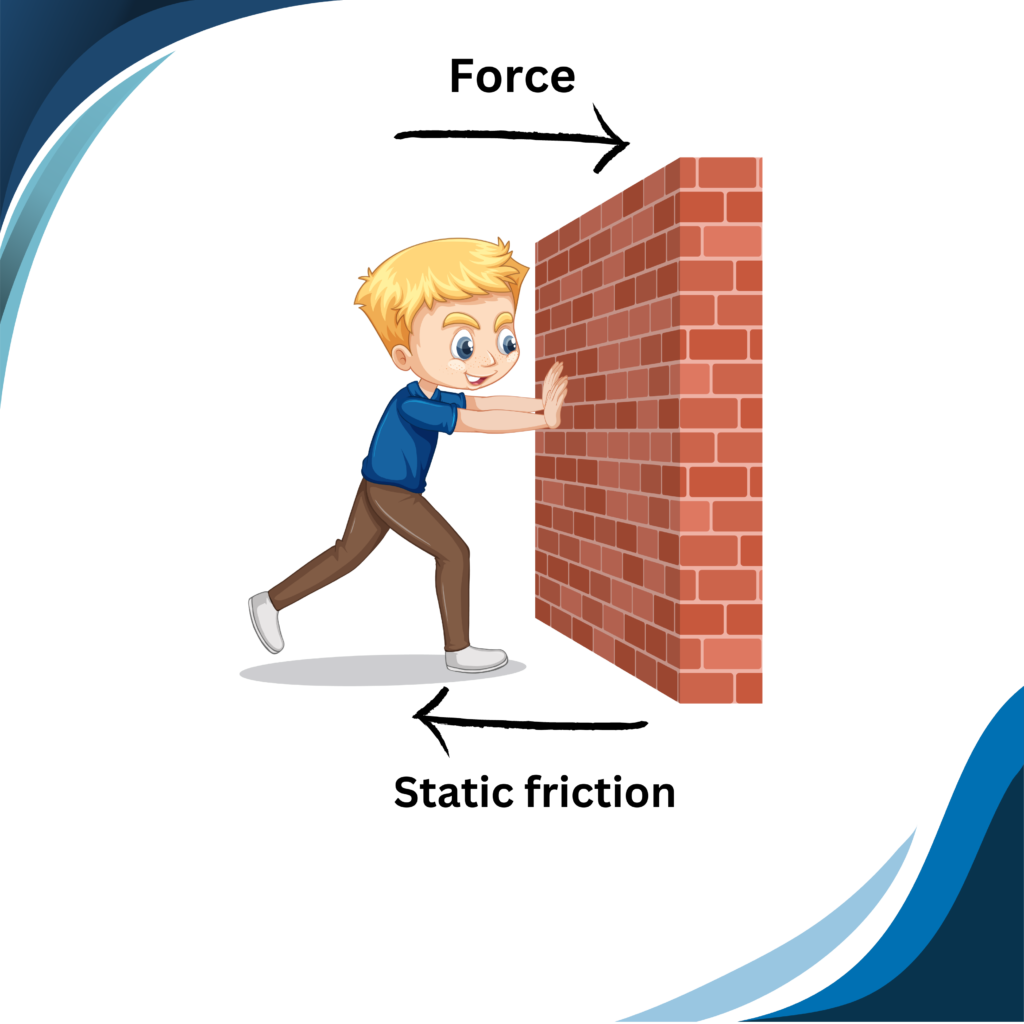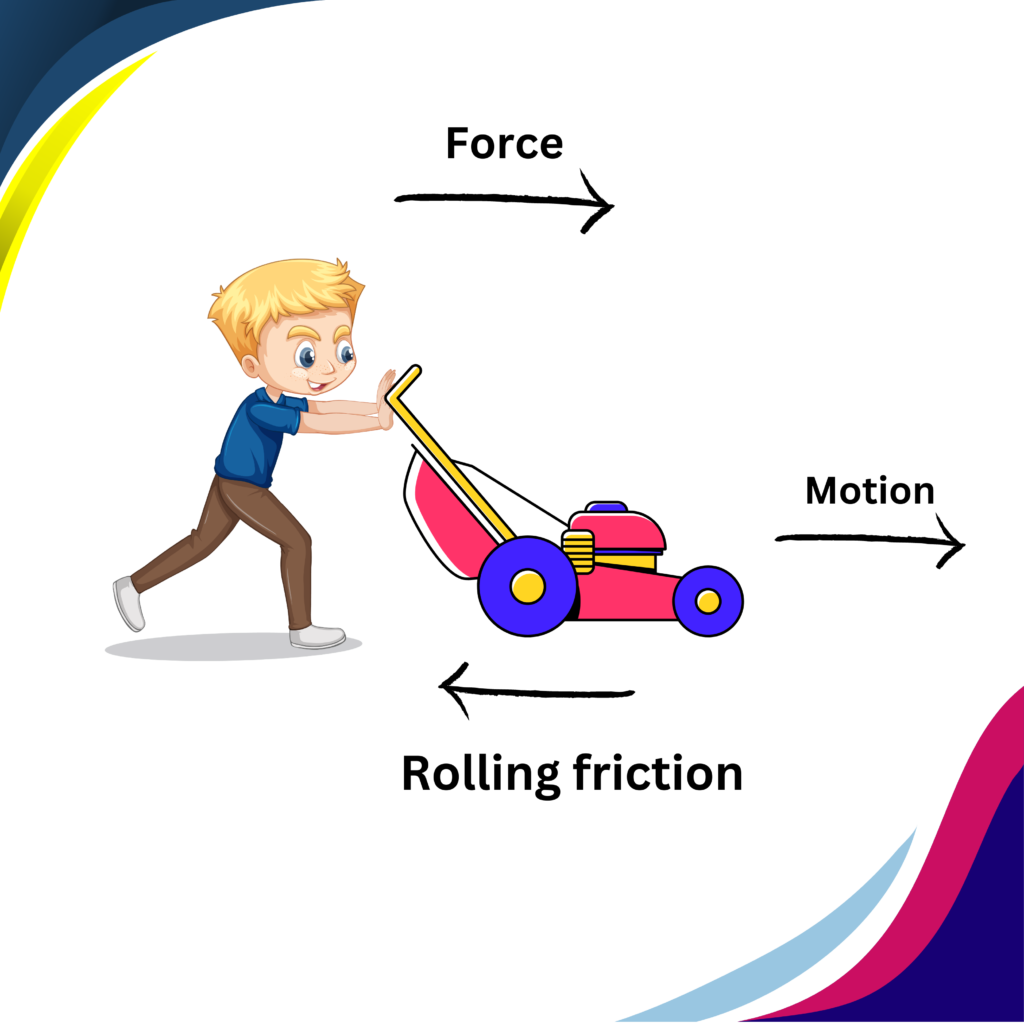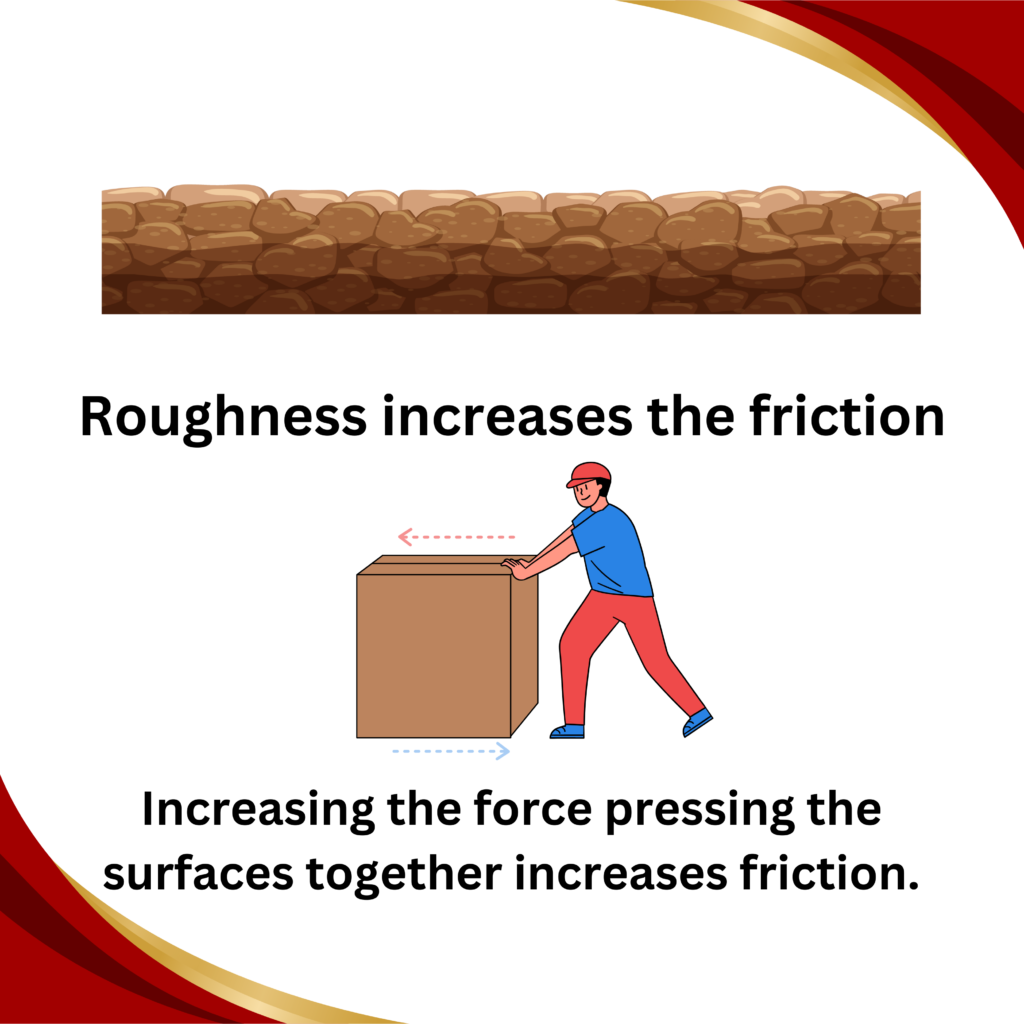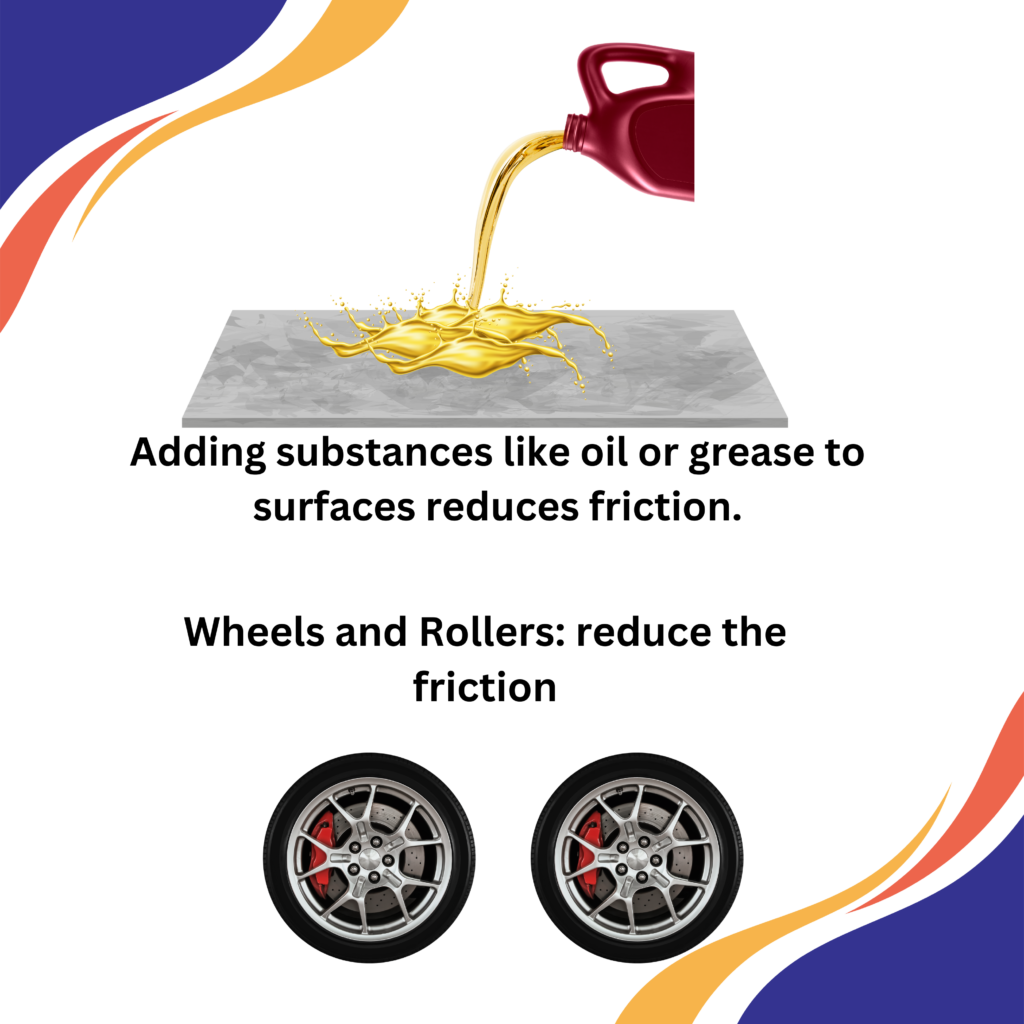Force Of Friction
key notes :
What is Friction?
- Friction is the force that opposes the relative motion or attempts of such motion between two surfaces in contact.


Types of Friction:
Static Friction:
This type of friction prevents an object from moving when a force is applied but the object doesn’t move.

Kinetic Friction:
This type of friction opposes the motion of an object already in motion.

Rolling Friction:
This occurs when an object rolls over a surface. It’s usually lower than kinetic friction.

Fluid Friction:
This happens when an object moves through a fluid (like air or water) and encounters resistance.

Factors Affecting Friction:
Nature of Surfaces:
The roughness or smoothness of surfaces affects friction. Rough surfaces create more friction.
Force Normal to the Surface:
Increasing the force pressing the surfaces together increases friction.
Temperature:
Friction generally decreases with an increase in temperature.

Importance of Friction:
Friction is essential in everyday life for walking, driving, and preventing objects from slipping.
It helps us grip objects and is necessary for various machines to function properly.

Ways to Reduce Friction:
Lubrication: Adding substances like oil or grease to surfaces reduces friction.
Smoothing Surfaces: Polishing or making surfaces smoother can reduce friction.
Using Wheels and Rollers: These reduce friction by rolling instead of sliding.

Calculating Friction:
The force of friction (Ff) can be calculated using the formula: Ff = μN, where μ is the coefficient of friction and N is the normal force (force pressing the surfaces together).
Coefficient of Friction:
It’s a measure of how much friction exists between two surfaces. It’s represented by the symbol μ.
The coefficient of friction is different for different pairs of materials. For example, rubber on concrete has a higher coefficient of friction than ice on ice.
Applications of Friction:
- Brakes in vehicles use friction to slow down or stop.
- Tires use friction to grip the road.
- Shoes have soles with friction to prevent slipping.
Let’s practice!

